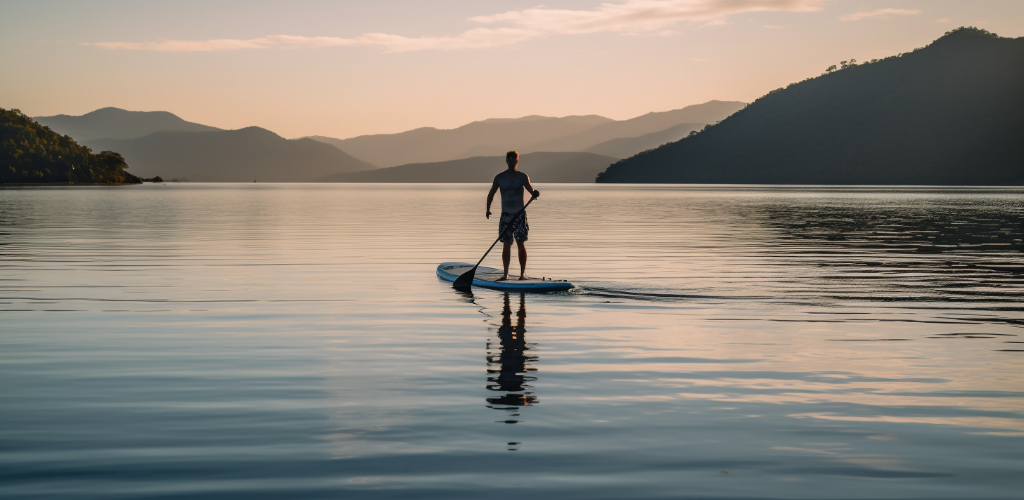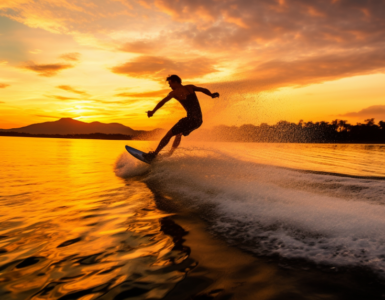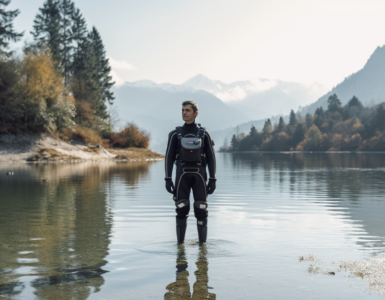Have you ever watched someone glide effortlessly across the water on a stand-up paddleboard and wondered if it’s as easy as it looks? Or perhaps you’ve been intrigued by the serene yet invigorating appeal of this water sport that seems to be on the rise. Stand-up paddleboarding, often shortened as SUP, is an outdoor activity that combines surfing and paddling into a truly delightful experience. Originating from the surfing culture of Hawaii, it has quickly gained popularity worldwide over the past decade.
Why is there such a growing interest in SUP? Well, not only is it an exciting way to explore the water, but it’s also an excellent form of exercise that engages your whole body. Now, you might be wondering about the difficulty level of stand up paddleboarding. Is it hard to pick up? What skills do you need? That’s exactly what we’re going to explore in this post. So, let’s dive right in!
What is Stand Up Paddle Boarding?
Stand up paddleboarding, as the name suggests, involves standing on a board and using a paddle to propel yourself through the water. It’s a versatile sport that can be done on a variety of water bodies – from calm and peaceful lakes to the vast and unpredictable sea. Depending on your interest, you can choose to go paddleboarding for touring, fishing, racing, or even surfing. Yes, you read it right! There’s also SUP yoga, where you perform yoga poses on a paddleboard. Sounds fun, doesn’t it?
Equipment Needed for Stand Up Paddle Boarding
Before you get started with SUP, you’ll need to equip yourself with some basic gear. The most obvious piece of equipment is the paddleboard itself. Paddleboards come in a variety of sizes and styles to suit different types of paddleboarding activities. Next, you’ll need a paddle, which is used to propel and steer the board. A leash is another essential piece of equipment that attaches you to the board, preventing it from drifting away if you fall off. Lastly, safety should always be your top priority when participating in any water sport, so a personal floatation device is a must-have.
The Basics of Stand Up Paddle Boarding
Ever wondered what it takes to master the art of stand up paddleboarding? Let’s break down the basic skills and techniques that will help you get started. From balancing on the board to paddling with finesse, we’ve got you covered.
Balancing on the board
To begin with, the key to stand up paddleboarding, like any other board sport, is balance. But don’t worry, you don’t have to be a gymnast to master this. With a little bit of patience and practice, you’ll be able to stand and balance on the board with ease. The idea is to start by kneeling on the board before gradually standing up, one foot at a time. Remember, keeping your feet parallel and hip-width apart will help distribute your weight evenly.
Paddling techniques
Once you’ve nailed the balance, it’s time to paddle. Paddling may seem easy, but there’s a technique to it. The trick to efficient paddling is to use your entire body, not just your arms. A good stroke involves a twist from your torso, drawing power from your core muscles. Sound complicated? It’s not, once you get the hang of it!
Turning the board
Now comes the fun part – turning the board. This is where your paddle comes in handy. Placing the paddle into the water at the front of the board and sweeping it towards the tail in a long arcing stroke will help you turn. It’s all about precision and control!
Common Challenges for Beginners
As a beginner, you’re bound to face a few hiccups along the way. And that’s okay, it’s all part of the learning process. Let’s look at some common challenges that beginners often face and some handy tips to overcome them.
| Common Challenges | Tips to Overcome |
|---|---|
| Maintaining Balance | Practice on a wide, stable board in calm waters. |
| Directional Control | Focus on paddle technique and utilize your core strength. |
| Fatigue | Start with shorter sessions and gradually increase your time on the water. |
| Fear of Falling | Remember, everyone falls at some point. It’s part of the learning process! |
Factors that Affect the Difficulty of Stand Up Paddle Boarding
Ever wondered why some people seem to take to stand up paddle boarding like a duck to water, while others struggle to find their balance? Here’s a little secret – it’s not just about individual skill or talent. There are several factors that can make paddle boarding more or less challenging.
Let’s break it down, shall we?
- Water conditions: The state of the water you’re paddling on can significantly impact the difficulty level. Calm, flat waters like lakes or slow rivers are ideal for beginners. On the other hand, choppy seas or fast rivers can increase the challenge.
- Weather: Windy conditions can make paddle boarding tough, especially for beginners. Paddling against the wind requires more strength and can also affect your balance.
- Physical fitness: Stand up paddle boarding is a whole-body workout. Your core strength, balance, and upper body strength all come into play. The fitter you are, the easier you’ll find it.
- Experience: Like any sport, the more you practice, the better you’ll get. Experience with similar sports, like surfing or snowboarding, can also give you a head start.
Physical and Mental Benefits of Stand Up Paddle Boarding
So, why bother with stand up paddle boarding, especially if it can be challenging? Well, it’s not just about the thrill of gliding over the water (although that’s certainly part of it!). Paddle boarding offers a range of physical and mental benefits that make it more than worth the effort.
Physically, it’s a fantastic workout. It improves your core strength, enhances balance, boosts flexibility, and provides a solid cardio session. Think about it – maintaining balance while paddling works your core, while the act of paddling itself strengthens your upper body and gets your heart pumping. Cool, right?
But that’s not all. Stand up paddle boarding can also benefit your mental health. It’s a great way to reduce stress and clear your mind. Being out on the water, focusing on your balance and movement, can help you forget about your worries for a while. It’s almost meditative!
How to Ease into Stand Up Paddle Boarding
Feeling inspired to give stand up paddle boarding a go? Great! Here are a few tips to help you ease into it:
- Start in calm waters: As a beginner, consider starting on a calm lake or slow-moving river. This will help you master the basics without the added challenge of waves or strong currents.
- Take lessons: If possible, take a few lessons from a certified instructor. They can provide valuable insights and tips that you might not get if you’re learning on your own.
- Practice yoga on the board: Practicing yoga on your paddle board can help improve your balance and core strength, making you a better paddler. Plus, it’s a fun way to mix up your workout!
The Learning Curve of Stand Up Paddle Boarding
How long does it take to master the art of stand up paddle boarding? Well, like any other sport, it tends to vary from person to person. However, most beginners can pick up the basic skills within a few hours of practice. Getting to a level where you feel comfortable and confident on your board in various conditions might take a few weeks or even months, depending on how consistently you’re able to practice.
Compared to other water sports, stand up paddle boarding has a relatively mild learning curve. It’s less technical than sports like surfing or kiteboarding, making it a great option for those who want to spend more time enjoying the water and less time wrestling with equipment.
Safety Precautions for Stand Up Paddle Boarding
As with any water sport, safety should always be a priority when paddleboarding. Let’s review some of the most important safety precautions:
- Know how to swim: This might seem like a no-brainer, but it’s worth emphasizing. If you’re going to be out on the water, you need to know how to get back to shore safely if you fall off your board.
- Always wear a personal floatation device: Even if you’re an excellent swimmer, a personal floatation device (PFD) is a must. It can save your life if you get into trouble on the water.
- Understand weather and water conditions: Before you head out, check the forecast and be aware of the current conditions. Wind, waves, and currents can all make paddleboarding more challenging, and it’s important to know what you’re getting into.
- Use appropriate equipment: Make sure you’re using a board and paddle that are suitable for your skill level and the conditions.
- Never go alone: Always paddle with a buddy or make sure someone knows where you are and when you’re expected to return.
Parting Thoughts
While stand-up paddleboarding might initially present a learning curve, with practice and perseverance, anyone can become proficient. It’s a sport that not only offers a fun and unique way to explore the water but also provides numerous physical and mental health benefits.
So, are you ready to give it a try? Remember, the key to mastering stand up paddle boarding is patience, consistency, and respect for the water. Happy paddling!




